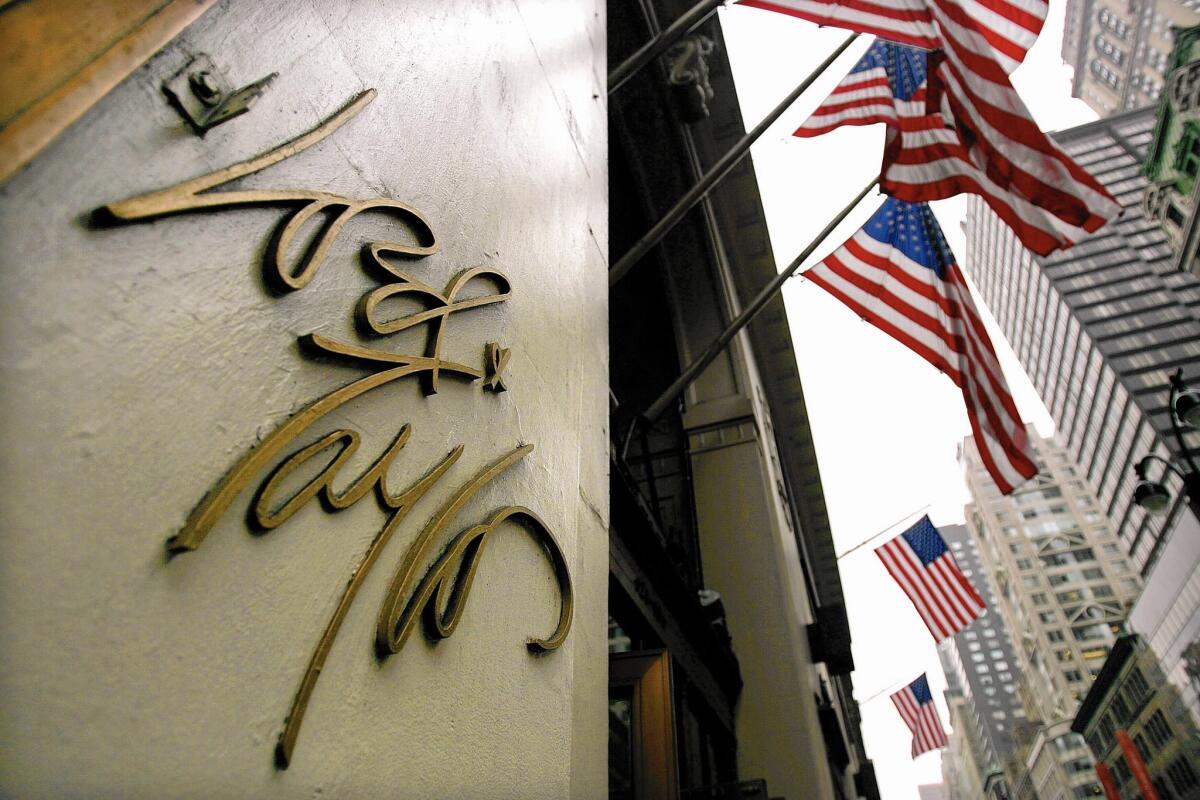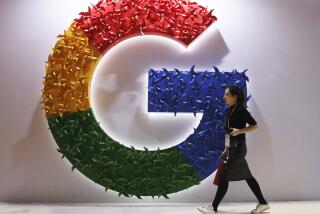Click here for actual journalism

- Share via
As newspapers and magazines struggle to survive, you’ll probably be hearing a lot about “native advertising.” It’s a purposefully vague way of saying that online ads will look more and more like articles, making it harder for readers to tell the difference.
And you’ll likely see more and more cases of marketers getting caught trying to trick people. This week, the Federal Trade Commission announced its first-ever enforcement action involving native advertising.
The clothing company Lord & Taylor reached a settlement with the agency over deceptive-trade charges concerning a story about the company’s duds on the fashion site Nylon. The story was actually a paid ad.
Lord & Taylor, owned by Hudson’s Bay, also was accused of paying thousands of dollars to dozens of so-called online influencers — a.k.a. Instagram users with big followings — to plug a dress without revealing that they’d been compensated.
“Consumers have the right to know when they’re looking at paid advertising,” said Jessica Rich, director of the FTC’s Bureau of Consumer Protection.
They do. And with print publications, that was seldom an issue. On the Internet, it’s a whole new ballgame.
“It’s a big problem and it’s getting worse,” said Ira Kalb, an assistant professor of marketing at USC’s Marshall School of Business. “Consumers are having a harder time knowing which media they can trust.”
There’s nothing new about sponsors trying to blend entertainment and advertising. First on radio and then in the early days of TV, programs routinely made no effort to hide their corporate backing — “Texaco Star Theater,” “Colgate Comedy Hour,” “Kraft Television Theater.”
Product placement is a sneaky but ubiquitous element of modern movies and TV shows. Nobody does it better than James Bond, for whom virtually no consumer product appears accidentally.
I’m less concerned about the pimping of popular entertainment than I am about the fast-crumbling firewall between news content and advertising.
“We’re going back to what we had in the 1950s, with advertisers being in charge of content,” said Jeff Chester, executive director of the Center for Digital Democracy, an advocacy group. “There’s going to be less and less information from reliable sources and more from sources that just want us to buy something.”
The problem is one of disclosure. Do news organizations do a sufficient job of helping people understand that one story or link is real news while another was provided by an advertiser?
Facebook and Twitter show how the effort to mislead people is deliberate. Posts and tweets from advertisers aren’t labeled “advertisement” or “paid ad.” Facebook uses small gray print to say, ambiguously, “sponsored.” Twitter’s mot juste is “promoted.”
“It’s hard for consumers unless the word ‘advertisement’ is there,” said Stephen Greyser, a marketing professor at Harvard Business School.
In the past, a newspaper would run advertising content in a different font.
“It was easy to see the difference,” Greyser said. “You might not see such distinctions on the Internet.”
Needless to say, marketers are thrilled with native advertising. These are ads that don’t look like ads. What they look like are news stories or blog posts or charts, and thus stand a better chance of catching your eye.
The New York Times and Wall Street Journal are among many newspapers experimenting with native ads on their sites. Hillary Manning, a spokeswoman for the Los Angeles Times, told me that the company has been producing “sponsored content” for about three years.
“We have guidelines and standards in place for both the selection and execution of sponsored content projects,” she said. “Once a project is undertaken on behalf of a client, the content is independently researched and edited. Any published content must be clearly labeled in keeping with sponsored content standards.”
The FTC issued guidelines for native ads late last year. “The more a native ad is similar in format and topic to content on the publisher’s site, the more likely that a disclosure will be necessary to prevent deception,” it advised.
Lack of such a disclosure is what got Lord & Taylor in trouble. But federal regulators can’t police the entire Internet. Experts say it’s highly likely that many sites and blogs will ignore the FTC’s rules in hopes of making more money.
“For reputable publishers like the New York Times or the L.A. Times, attempting to dupe people is simply not productive,” said Yakov Bart, an assistant professor of marketing at Northeastern University Business School.
“They will want to present native ads in ways that are consistent with other content,” he said, “but they will make sure they are labeled correctly.”
The gold standard at the moment, according to Bart, is the website Quartz, which features interesting stories along with slickly produced native ads.
They’re labeled “sponsor content” — “sponsored” would be more accurate, to my mind — and disclose at the bottom that the “article” was created on behalf of a client “by the Quartz marketing team and not by the Quartz editorial staff.”
The problem is that as native ads cohabit with real news, the line between journalism and marketing becomes increasingly blurry.
Consumers might say: “If it’s interesting content, what’s the difference?”
The difference is that the goal of journalism is to inform and enlighten. The goal of advertising is to influence your thinking and behavior, typically to get you to buy something.
The experts I spoke with said there’s no stopping this trend — it’s too far along and there’s too much money at stake. The onus, therefore, is on consumers to develop the critical tools required to recognize what’s a genuine story and what’s a well-clothed sales pitch.
“Be skeptical and suspicious,” said Valerie Folkes, a USC marketing professor. “Always assume that what you’re looking at may have been brought to you by a sponsor.”
David Lazarus’ column runs Tuesdays and Fridays. He also can be seen daily on KTLA-TV Channel 5 and followed on Twitter @Davidlaz. Send your tips or feedback to david.lazarus@latimes.com.
More to Read
Inside the business of entertainment
The Wide Shot brings you news, analysis and insights on everything from streaming wars to production — and what it all means for the future.
You may occasionally receive promotional content from the Los Angeles Times.











